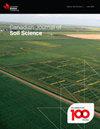miyo wîcêhtowin "良好关系":加拿大土著人民与土壤科学之间关系的思考
IF 1.5
4区 农林科学
Q4 SOIL SCIENCE
引用次数: 0
摘要
我提出这一观点,是希望在加拿大土壤科学学科与土著人民之间建立 miyo wîcêhtowin(在平原克里语中译为 "良好关系")。这一观点反映了土著居民与土壤科学之间的关系为何主要是一种剥削和忽视的关系这一难题,同时也反映了促进建立在互惠基础上的关系如何为土著知识体系和土壤科学带来改善土地和土壤管理的机会。土壤科学是作为平原殖民化的工具在这个国家诞生的,它通过农业定居将原住民从他们的土地和生计中边缘化。有必要阐明这段充满矛盾的历史,以了解草原原住民的当代现实,包括原住民为保护和恢复草原景观所做的充满希望的努力,以及土著知识体系的振兴--特别是通过水牛归还。进行这种分享是希望我们能够共同努力,使土著居民与土壤科学之间的关系互惠互利,将土壤科学作为一门学科,改善对土地的管理。本文章由计算机程序翻译,如有差异,请以英文原文为准。
miyo wîcêhtowin “good relations”: reckoning with the relationship between Indigenous Peoples and soil science in Canada
I offer this perspective as hope that miyo wîcêhtowin (translated as “good relations” in Plains Cree) can be established between the discipline of soil science and Indigenous Peoples in Canada. This perspective reflects on the difficult truths of why the relationship between Indigenous Peoples and soil science is primarily one of exploitation and neglect, but also on how fostering a relationship built on reciprocity poses opportunities for Indigenous knowledge systems and soil science to improve land and soil stewardship. Soil science was borne in this country as an instrument of colonization of the plains, marginalizing First Nations from their lands and livelihoods through agricultural settlement. It is necessary to illuminate this fraught history to understand the contemporary realities of First Nations in the prairies, including the hopeful efforts First Nations are making towards conservation and restoration of prairie landscapes—and revitalization of Indigenous knowledge systems—especially though buffalo rematriation. This sharing is done in the hope that we can collectively work towards reciprocity in the relationship between Indigenous Peoples and soil science as a discipline for improved caretaking of the land.
求助全文
通过发布文献求助,成功后即可免费获取论文全文。
去求助
来源期刊

Canadian Journal of Soil Science
农林科学-土壤科学
CiteScore
2.90
自引率
11.80%
发文量
73
审稿时长
6.0 months
期刊介绍:
The Canadian Journal of Soil Science is an international peer-reviewed journal published in cooperation with the Canadian Society of Soil Science. The journal publishes original research on the use, management, structure and development of soils and draws from the disciplines of soil science, agrometeorology, ecology, agricultural engineering, environmental science, hydrology, forestry, geology, geography and climatology. Research is published in a number of topic sections including: agrometeorology; ecology, biological processes and plant interactions; composition and chemical processes; physical processes and interfaces; genesis, landscape processes and relationships; contamination and environmental stewardship; and management for agricultural, forestry and urban uses.
 求助内容:
求助内容: 应助结果提醒方式:
应助结果提醒方式:


